Through Countryside Orchards and Vineyards in Agropolis

Head to the countryside and build a network of roads, fields, orchards, vineyards, and more with Agropolis.
As an interesting little piece of this introduction, I tried Sprawlopolis and could not wrap my head around the visual elements. So it was with a bit of hesitation that I made the decision to bring Agropolis to my table for the first time. I was excited about the changes! This series is deceptively small, offering a complex challenge with just 18 cards!
Game Overview
Game Name: Agropolis
Publication Year: 2021
Designers: Steven Aramini, Danny Devine, and Paul Kluka
Artists: Loïc Billiau and Danny Devine
Publisher: Button Shy
Solo Mode: Designed for Solo (Included in the Base Game)
By overlapping and placing 15 cards, a set of 3 scoring goals provides the victory threshold. Various types of farmland appear on each card, along with roads that might meander here and there. Although relatively quick and compact, the strategies to win are tricky to master!
First Play
Janaury 2, 2022
Complexity
2
Latest Play
January 2, 2022
Expansions
1
Setup Time
Almost None
Lifetime Plays
2
Play Time
15 Minutes
High Score
27
Game Area
18" x 18"
Low Score
21
Learning to Play
The rules are short and quick to understand, yet I enlisted the help of some nearby Calico Critters. Who better to understand the proper pigpen placement than pigs?!
Despite the new patterns and clear differences, I still had trouble thinking through the placement choices.
Had I been limited to just placing cards next to each other, I might have felt more confident! But the ability to overlap cards threw me off with the possibilities.
I didn’t want to give up, though, and set out to create a little farming area these pigs would be proud of!
Roads to Nowhere
My first attempt was surprisingly close to meeting the victory threshold! I definitely saw some beneficial choices and nearly turned these disjointed areas into huge fields.
The roads continued to give me nightmares. It always stuck in my mind that I would lose points for having too many, so I tried to connect them up where I could.
Granted, I might not have any sort of strategy figured out yet! This experience felt very hard, though. My brain!
This is a lesson for me… If a game doesn’t seem to be for me, don’t pick up one that’s almost exactly the same.
Understanding When to Stop Exploring
One of the biggest appeals of board games for me is the sense of discovery. There are always new games ready to try out with a huge variety of themes and mechanics. That phase of exploration never quite ended for me, although I’ve pared down my nonsensical acquisitions… To a certain degree! But when is it time to stop exploring? Is there such a time?
I’ve been having a great time with existing games in my collection, yet that sense of finding something new is still there. So many new rules, strategies, and entire worlds to discover! The real lesson is in honing in on what I decide to explore. If there’s a theme or mechanic that hasn’t worked for me, I’m most likely not going to find something.
It also boils down to what this whole process of exploring games is for. What am I after? Right now… I have no idea. Fun? Ha ha! No shame in just wanting to play board games. Yet I know something about my preferences. Buying games that are very close to others I’ve tried and not liked isn’t exploration… Because what will I find? More of the same.
Now, this isn’t to say that I’m writing off anything entirely. There’s still the fun process of researching new games… Although you may know me as the Breaker of Wallets, so I’m usually no help. Ha ha! The point I want to make, mostly to myself, is that I know a lot of my preferences and need to make sure I use those to inform any new game acquisitions.
Pieced Together
There are likely recommended goal card combinations for the first few outings, but I simply went ahead and randomized everything to come up with this… Mess? Ha!
I appreciated the little puns and jokes on nearly every card. No surprise there! Definitely worth a close look.
However, these cards only exasperated my problem with not being able to see past the roads. They didn’t oppose one another, but I had to do a lot to make things happen.
My excellence came from the orchards, though. I netted an excellent 17 victory points during both plays!
Cow and Pig Approval
A few pigs weren’t the only Calico Critters helping out around my makeshift farm! I also had some friendly cows stop by to “moove” the cards for me. Oh, the puns. Ha ha!
Maybe I needed to hand-pick some of the goal cards to truly appreciate the strategies. It all just felt very muddled in my mind, and I’m still not sure why it seems so hard.
Then again, not every game works for me. I want to like them all, but that’s impossible. This might not be for me.
Not surprising, and not an indication of how good a game is. There are plenty who love this one, which is awesome!
Session Overview
Play Number: 1 and 2
Solo Mode: Designed for Solo (Included in the Base Game)
Play Details: Goals 1, 12, and 16
Outcome: 27 Points and 21 Points (2 Losses)
I thought I was on the right track, but the roads proved to be too much for me. There were some small victories with certain goals, yet I didn’t feel like I understood what I was doing. My cows and pigs were most disappointed! Maybe I need to come back at some point and try to understand why I can’t quite “see” what’s going on with the play area. It’s so clear here, but during play, I was oddly lost!
%
1 Play
Affordability
Price & Value
7
Functionality
Challenges & Mechanics
7
Originality
Design & Theme
2
Quality
Components & Rules
10
Reusability
Achievement & Enjoyment
7
Variability
Distinctness & Randomness
5
+ Pros (Positives)
- All of the scoring goals contain funny puns while making the information clear with plenty of visual examples.
- For such a small set of components, there are a seemingly endless number of possible scoring goal combinations.
- Little details dot the countryside to add just enough visual variety without taking away from the gameplay.
- Play time is typically very quick, although it can last much longer if every decision is analyzed for a high score.
- The play area spreads out, yet it still remains manageable since keeping the cards close is usually best.
- Every card is used during each play and the clever double-sided, multi-use card design adds a lot of variety.
– Cons (Negatives)
- The trio of scoring goals can lead to difficult combinations that may not work together during game end scoring.
- Although each type of area has a unique color and general pattern, the roads can make it hard to see connections.
- Being able to place a new card next to or on top of existing cards is interesting, but adds a lot of possible options.
- It’s difficult to keep track of scoring during play so that the outcome usually isn’t known until the very end.
Victory Conditions
Meet the Scoring Goal Requirements
- Overall Goal Progress 33%
Goals and Milestones
Score at least 20 points.
Score at least 30 points.
Win with scoring goals 1, 12, and 16.
Continue the Conversation
What do you think of Agropolis? Are there any scoring goal combinations you enjoy the most? There are so many challenges wrapped up in this small game, and I still think I might be able to figure it out! I wonder if I’m comparing it to similar games in my mind while playing, mixing up the visuals and rules. My visits to the countryside aren’t over!
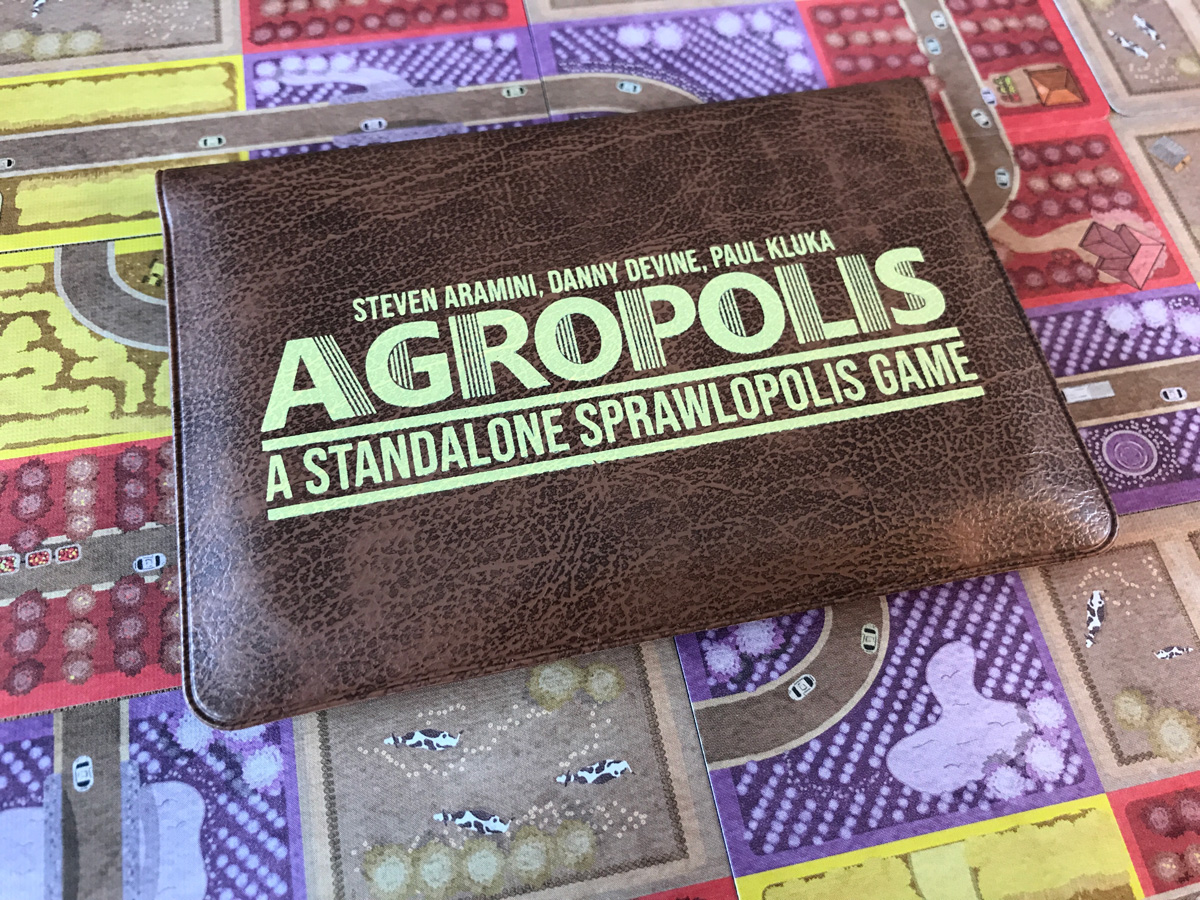
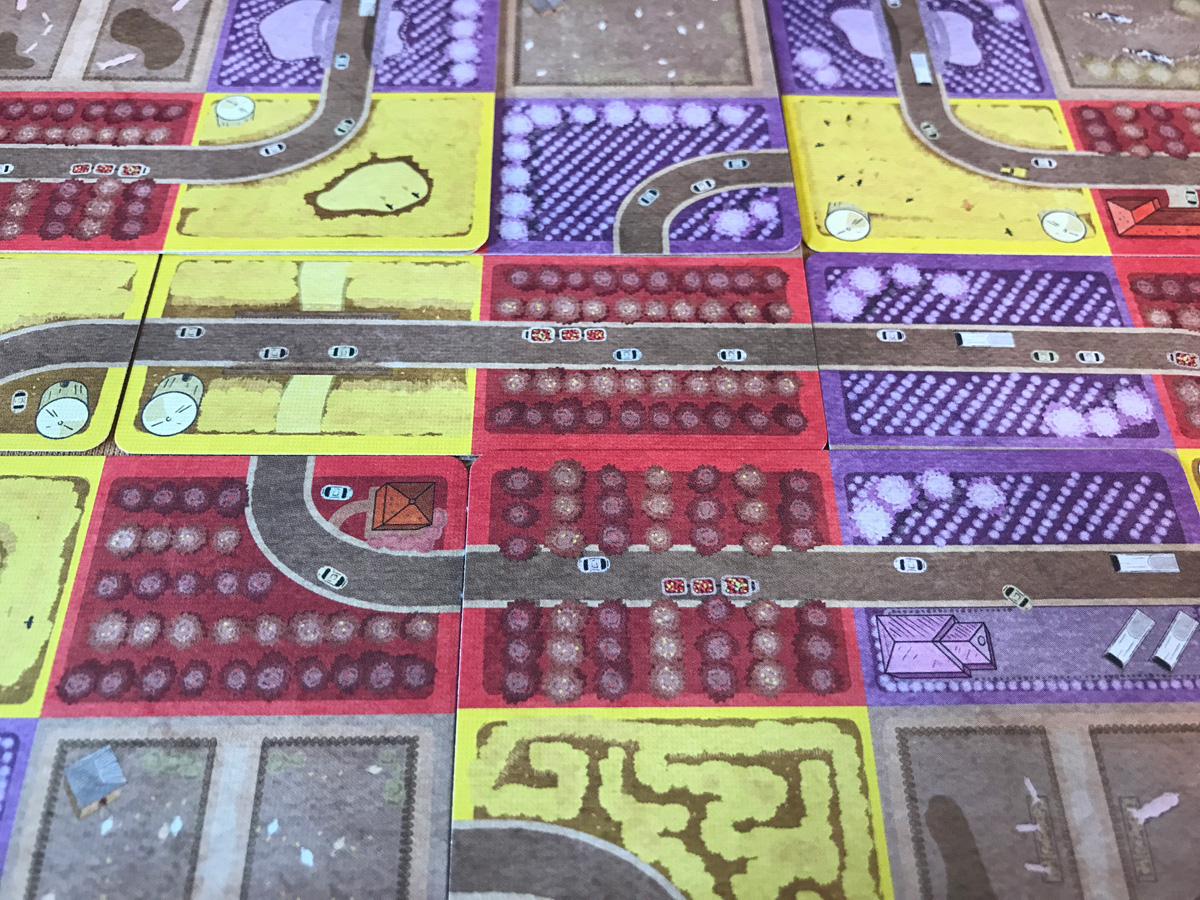
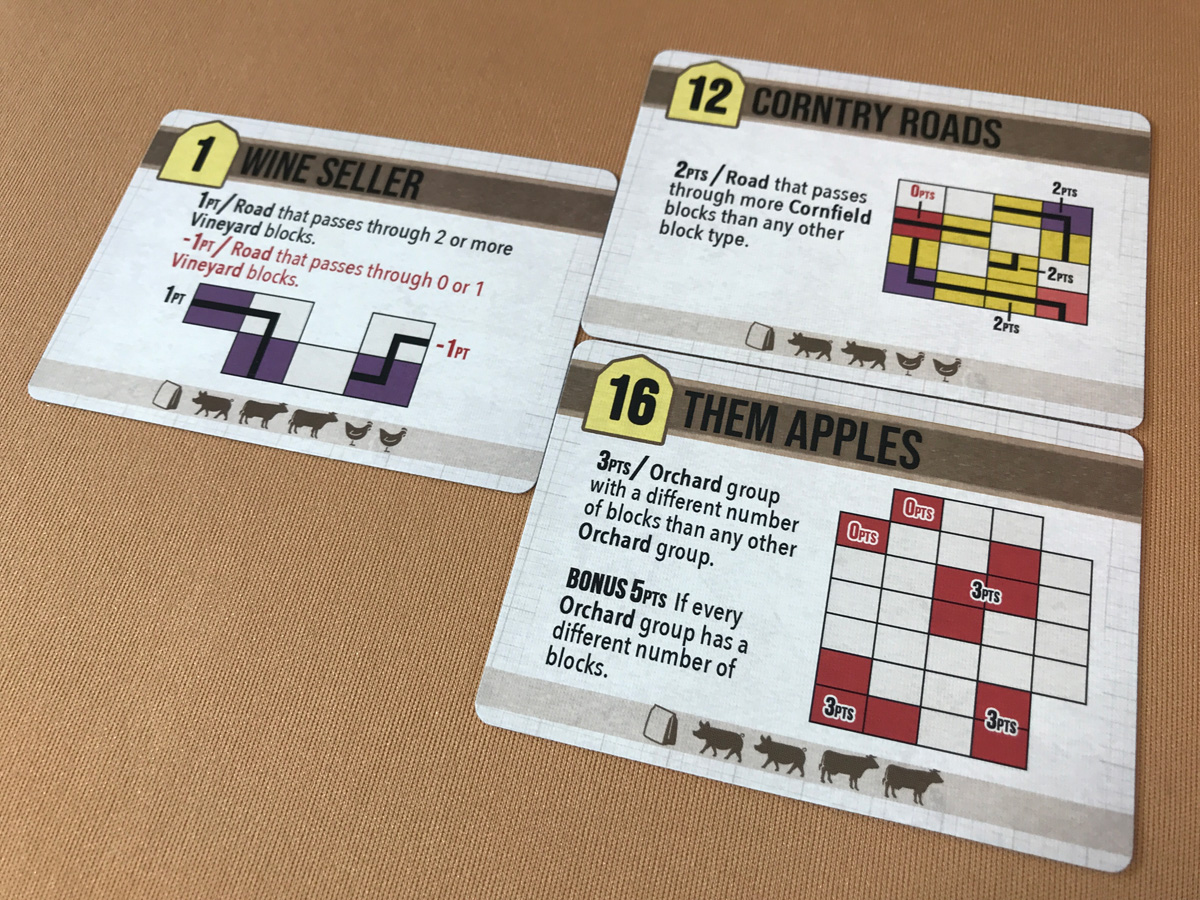
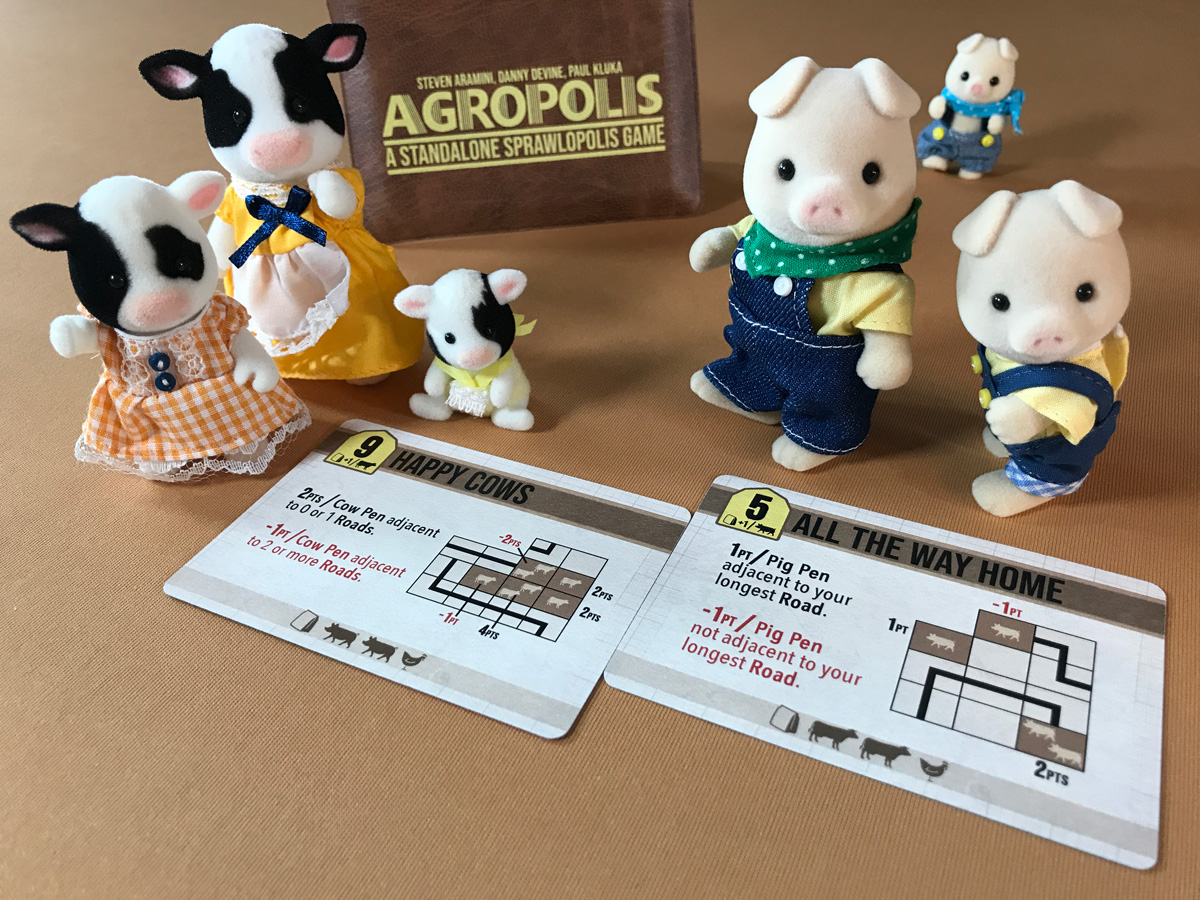
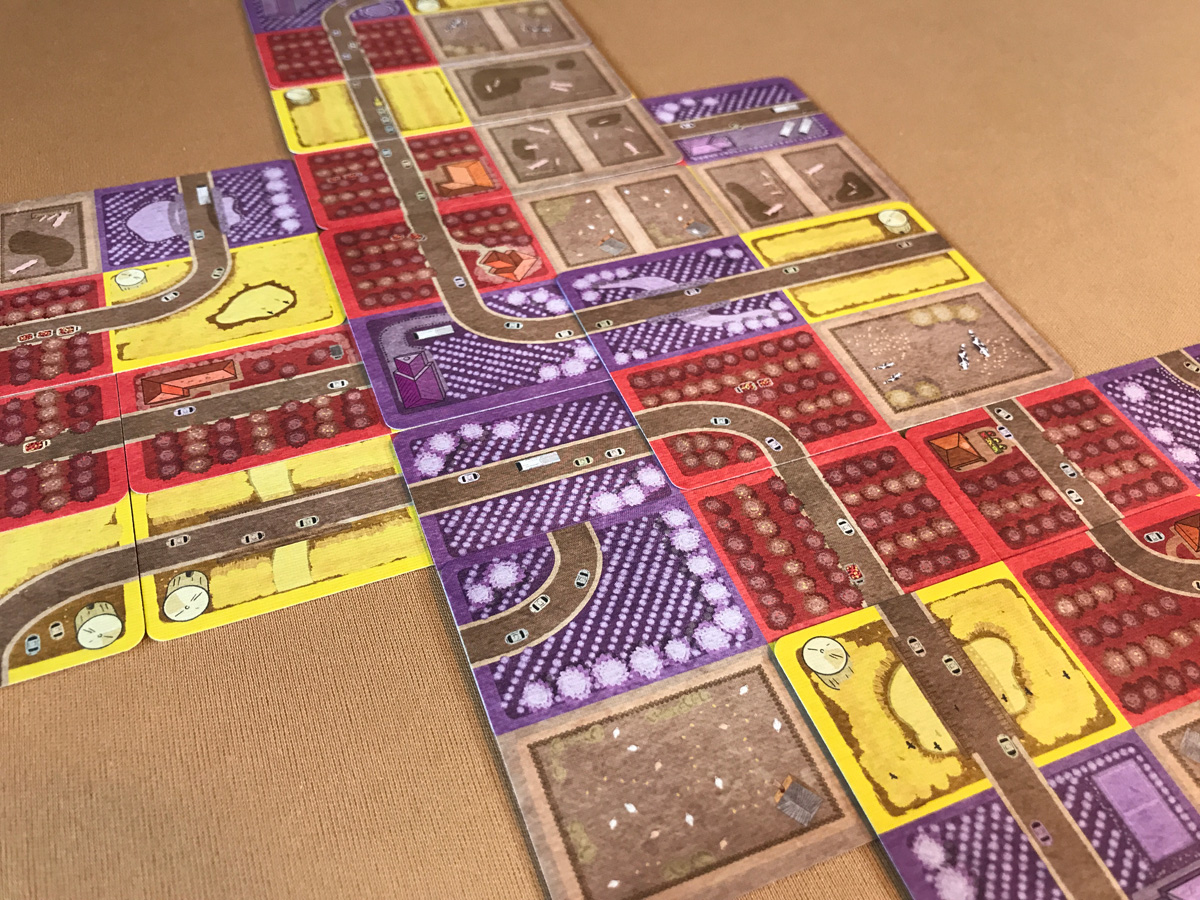
I’m pretty much agreeing with all of your pro and cons. The game never fully clicked with me. I must say I had fun with the expansions that bring some entertaining twists to the puzzle. Winning was always something I would not count on anyway.
Good to know! I have all of the expansions and hope that this eventually clicks with me. If not, always nice to see that it has a lot of fans out there!
Why not give yourself a mulligan option for the scoring condition cards, so you don’t end up with some very unlucky combinations of cards. Especially if the game isn’t something, you already know and love. I would totally do that if I were playing a game, I was not too sure was for me. I would give it a lot of leeway, so it had a decent chance of converting me – even if I was more reluctant to like it that with other games.
Maybe even starting with some specially chosen scoring condition cards for my first few games to make that part easy for me, so I could focus on whether I like the mechanisms of the game or not and figure out how the game should be played.
Great suggestions! My main issue isn’t necessarily the scoring cards: I often struggle to see the overlapping possibilities. This is something that happens to me with similar games, and it’s likely pretty unique to me! Can’t fault the game for that. I agree that using easier objectives to start with is likely the best way to get into the game. If I play agin, that’s certainly something I’ll be trying out. Thanks!